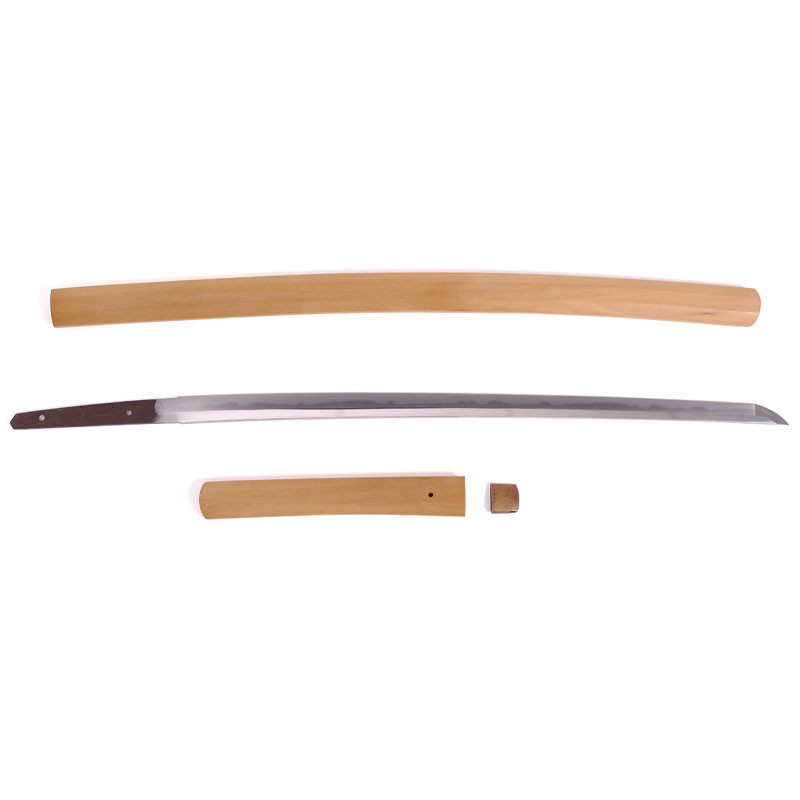














More informations about this product
| Total Weight | 0.964 kg | |
| Weight without Saya | 0.734 kg | |
| Blade Weight | 0.628 kg | |
| Full Blade length (Toshin) | 79.6 cm | |
| Nagasa | 62.1 cm | |
| Nakago Length | 17.5 cm | |
| Sori (curvature) | 0.76 cm | |
| Kissaki Length | 3.55 cm | |
| Moto Haba | 2.9 cm | |
| Saki Haba | 2.1 cm | |
| Moto Kasane | A = 0.65 cm B = 0.67 cm |
|
| Saki Kasane | A = 0.44 cm B = 0.46 cm |
|
| Curvature | Koshi Zori (Curvature on the first third) very small | |
| Type Kissaki | Chū Kissaki (medium length) | |
| Blade Structure | Shinogi zukuri (diamond shape) | |
| Mune | Iori mune (Triangular) | |
| Hamon | Toran Ba Gunome Midare with dense Nioiguchi, presence of Yo, Ashi, Kinsuji and Sunagashi. (No Yakidashi because shortening O Suriage) |
|
| Hada | Very Dense Ko-Itame | |
| Boshi | Ko-maru Kaeri (rounded with return on the mune) | |
| Nakago | length 17.5cm, Mumei (unsigned), O suriage (shortened) perfectly redone, Futsugata (classic shape), 2 Mekugi Ana, Kesho Yasurime, Iriyamagata end (pronounced dissymmetric V) | |
| Saya | Shirasaya in Magnolia, 228g, 72.7cm | |
| Tsuka & Tosogu (Tsuba, Menuki, Fuchi Kashira) |
- Tsuka: Magnolia shirasaya, 78g, 26.5cm - Habaki: 26g copper with oblique Neko Gaki. |
|
| Study & Team Review |
The Osaka Tsuda School originated in Settsu Province, now Hyogo and Osaka.
|
|
Share your opinion
error Your review appreciation cannot be sent
feedback Report comment
check_circle Report sent
error Your report cannot be sent